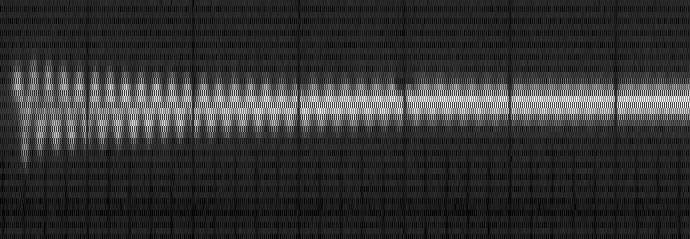I performed a test of the D800E and the Nikon 400mm f/2.8 lens with the oscillocope time base set to 1/2 second per division. Here is the result magnified by a factor of 6 in the vertical dimension:
Same second-order underdamped vibration. The time constant seems to be even longer than two seconds, more like three. The initial amplitude is about 18 pixels peak-to-peak (PP). To get it to one pixel PP, we need three time constants, or 9 seconds.
By the way, the head isn’t causing the vibration. I tried the Arca Cube and got the same results.

Jack Hogan says
Hi Jim,
Great idea that of the oscilloscope for vibration testing. You may be able to make the resulting images more readable by white balancing the raw data: if you are using DCRAW try -d -4 -T -r (r,g,b,g multipliers to make all channels about the same value on the trace).
Jack
Jim says
Thanks for the tip, Jack. I don’t use the raw values any more, finding that using interpolation ro res up Lr converted images gives better visualization:
http://blog.kasson.com/?p=4674
Jim